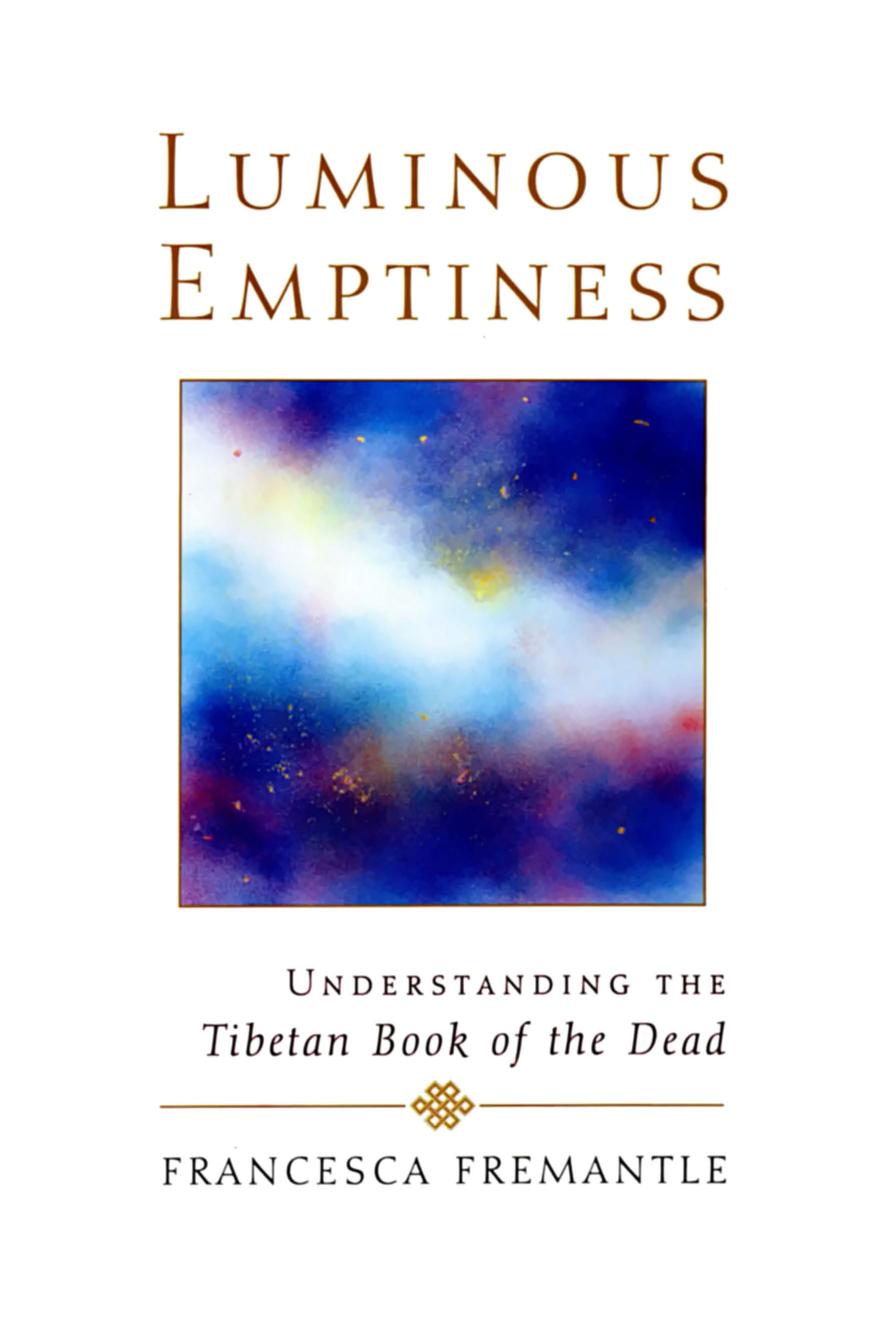Luminous Emptiness: Understanding the Tibetan Book of the Dead by Francesca Fremantle

Author:Francesca Fremantle [Fremantle, Francesca]
Language: eng
Format: mobi, pdf
Publisher: Shambhala Publications
Published: 2013-12-09T16:00:00+00:00
Chapter Ten
The Great Perfection
LIBERATION THROUGH HEARING comes from the Nyingma tradition, the ancient school, which derives its teachings from those brought to Tibet by Padmakara and his contemporaries in the eighth century. The final element in part 1 is a brief introduction to the distinctive flavor of this tradition and to some of its special features and terminology.
First of all, instead of the three yanas described in chapter 1, the path is divided into nine yanas.1 The first two are called the shravakayana (the hearers’ way) and pratyekabuddhayana (the solitary buddhas’ way); they correspond to the level of hinayana. The third is the bodhisattvayana (the bodhisattvas’ way), equivalent to mahayana. The other six fall into the domain of vajrayana. In both old and new traditions, the tantras are divided into categories of outer and inner. They share the three classes of outer or lower tantras, which are known as kriya (ritual action), charya (conduct or way of life), and yoga (union). In the Nyingma tradition, these categories of tantra form the next three yanas. In Nyingma terminology, the charya class is also known as ubhaya (of both kinds) because it bridges the other two yanas. The new traditions (Kagyü, Sakya, and Geluk) have only one category of inner or higher tantra: anuttarayoga (highest yoga); to this class belong the well-known tantras such as Guhyasamaja, Chakrasamvara, Hevajra, and Kalachakra. The Nyingma tradition divides the inner tantra class into its three final yanas: mahayoga (great yoga), anuyoga (further yoga), and atiyoga (transcendent yoga).
Mahayoga is mainly concerned with the stage of creation and anuyoga with the stage of completion, while atiyoga takes the practitioner beyond both. Atiyoga contains the special teaching particularly associated with the Nyingma tradition, generally known by its Tibetan name of dzogchen, meaning “the great perfection.” It is arranged in three sections on mind, space, and special instructions,2 which expound the dzogchen view and the practical means of realizing it.
Unfortunately, no original Sanskrit literature relating to dzogchen has survived, or at least none has yet been discovered, and even the name dzogchen is found only in Tibetan.3 Many texts were later discovered as termas, so they were naturally composed in Tibetan and have no Sanskrit counterparts. These teachings were obviously greatly refined and developed within Tibet, but they probably originated in the far northwestern region of ancient India, now Afghanistan and Pakistan, which was a great stronghold of tantra and the birthplace of Padmakara. This area was a meeting place of many cultures and influences; it was conquered by Muslim invaders several centuries before the rest of northern India, so it is not surprising that much has disappeared.
Dzogchen is a teaching of absolute directness and simplicity, going straight to the heart of the Buddha’s message. It is the result of the most subtle and profound insight into the ultimate nature of reality and the mind. Again and again, in journeying along the Buddhist path, we find methods designed to bring about a certain experience, but once that experience has been
Download
Luminous Emptiness: Understanding the Tibetan Book of the Dead by Francesca Fremantle.pdf
This site does not store any files on its server. We only index and link to content provided by other sites. Please contact the content providers to delete copyright contents if any and email us, we'll remove relevant links or contents immediately.
The Way of Zen by Alan W. Watts(6292)
Ego Is the Enemy by Ryan Holiday(4964)
The Art of Happiness by The Dalai Lama(3851)
The Book of Joy by Dalai Lama(3709)
Why Buddhism is True by Robert Wright(3291)
Spark Joy by Marie Kondo(3091)
Shift into Freedom by Loch Kelly(3033)
Happiness by Matthieu Ricard(2890)
A Monk's Guide to a Clean House and Mind by Shoukei Matsumoto(2787)
The Lost Art of Good Conversation by Sakyong Mipham(2444)
The Meaning of the Library by unknow(2395)
The Third Eye by T. Lobsang Rampa(2174)
The Unfettered Mind: Writings from a Zen Master to a Master Swordsman by Takuan Soho(2160)
Red Shambhala by Andrei Znamenski(2074)
Anthology by T J(2049)
The Diamond Cutter by Geshe Michael Roach(1957)
Thoughts Without A Thinker: Psychotherapy from a Buddhist Perspective by Epstein Mark(1901)
Advice Not Given by Mark Epstein(1767)
Twilight of Idols and Anti-Christ by Friedrich Nietzsche(1764)
